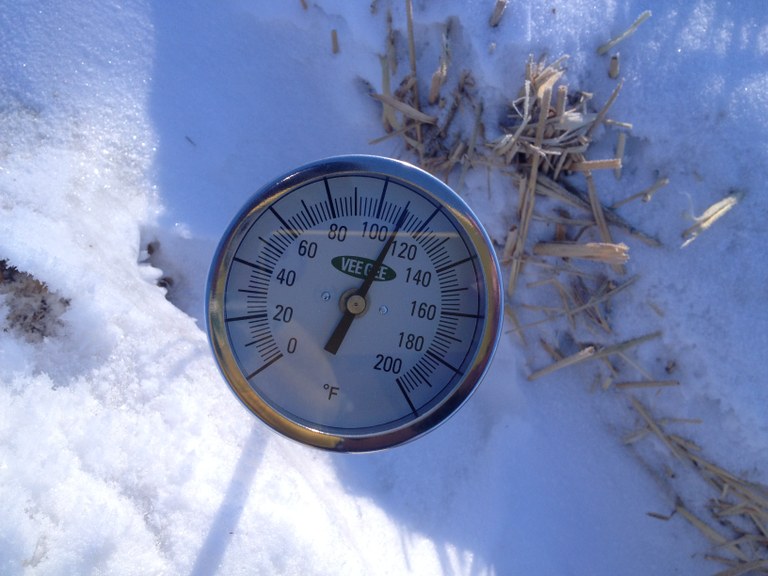Composting Youngstock Mortalities
Livestock mortalities are an inevitable part of all livestock operations. Rendering, incineration, burial and composting are approved methods of carcass disposal in North Dakota. Though dragging a carcass off to the section line has been a historical practice, abandonment is not recommended and is likely illegal in your state. Abandonment promotes extreme biological and disease hazard, threats to water quality, odors, flies, scavengers, rodents and visual pollution. Livestock mortalities are composted at the NDSU Carrington Research Extension Center.
Composting is a naturally occurring process that breaks the carcass into basic elements via microorganisms and heat generated during composting. Composting is a simple process that requires few materials and minimal maintenance.
Following are some tips on how to build a successful mortality compost pile or windrow:
- If composting one animal, build a pile.
- If composting several animals, build a windrow.
- If the carcasses are from smaller livestock or newborn animals, they can be layered as shown in the diagram below.
- You’ll need base material such as straw or old hay, bulking material such as manure or spoiled silage, and cover material such as straw, old hay or sawdust.
Diagram from the Cornell Waste Management Institute showing how to layer small livestock mortalities in a compost pile.
Use this process for composting:
- Start with 2 feet of base material in a windrow or circle, depending on how many carcasses will be composted.
- Lay the carcass on top of the base. Have at least 1 foot of base material between the perimeter of the carcass and the edge of the base.
- Cover the carcass with 8 to 10 inches of bulking material.
- Cover the entire pile or windrow with 2 feet of cover material. The cover material should be placed on the top and sides, with no part of the carcass showing. The pile needs a good cap to keep predators out and seal in heat.
To maintain the compost site:
- Leave the pile or windrow undisturbed to keep heat sealed in during the very cold winter months.
- To accelerate the process, aerate the pile every two months using a loader from early spring until late fall.
- Make sure sufficient cover material always is present.
 Internal temperature of a winter livestock mortality compost pile in North Dakota.
Internal temperature of a winter livestock mortality compost pile in North Dakota.
For more information:
- Check out this link to the Livestock and Poultry Environmental Learning Community. You will find archived webinars pertaining to various components of mortality management: https://lpelc.org/mortalities/
- View the NDSU Extension publication 5 Easy Steps for Composting Dead Livestock: https://www.ag.ndsu.edu/publications/livestock/5-easy-steps-for-composting-dead-livestock
- See NDSU Extension’s “Animal Carcass Disposal Options” publication https://www.ag.ndsu.edu/publications/environment-natural-resources/animal-carcass-disposal-options-rendering-incineration-burial-composting.
Interested in composting your livestock mortalities during calving or lambing this year? Contact you local Extension agent or Mary.Keena@ndsu.edu (701-652-2951) for on-farm assistance.
Mary Keena
Mary.Keena@ndsu.edu
Extension Specialist, Livestock Environmental Management


